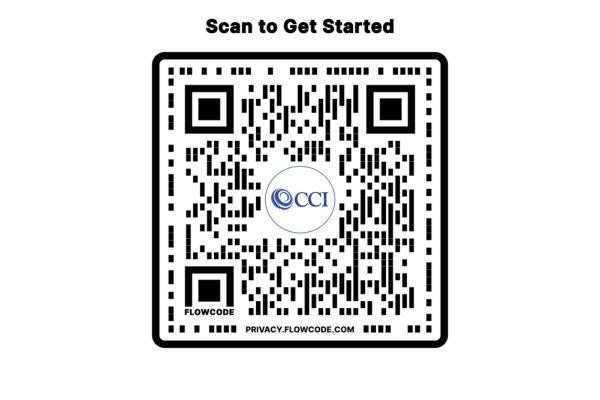In the collision repair industry, attracting and retaining skilled professionals has become a formidable challenge, underscored by a constellation of systemic issues. This article delves into the 10 most significant barriers that not only hinder the development of new talent, but also complicate the retention of experienced personnel.
Central is the absence of a standardized apprenticeship program, which serves as the linchpin in understanding and addressing the broader spectrum of challenges. As we explore these issues, listed below, we aim to unravel the threads that may lead us toward more integrated and effective solutions, setting the stage for a detailed examination of each barrier and its impact on the industry.
Drawing upon the Collision Career Institute's combined 150 years of experience in the field, we present our list of the top 10 critical issues facing the collision repair industry today. These insights reflect our deep understanding of the challenges and opportunities within the sector and aim to guide future improvements and innovations.
1. The absence of a standardized apprenticeship program and fragmented industry practices, combined with inadequate support for mentors, hinders effective recruitment and skill alignment in the collision repair industry. This foundational problem affects recruitment, training quality and skill alignment across the industry.
2. The lack of a standardized career path and inadequate training solutions impedes the development and support of new entrants in the industry. This directly impacts the capability and growth potential of new entrants.
3. Standardized training gaps, concerns about internal competition, and challenges in identifying capable teaching mentors that have the rare "teaching gene" hinder effective knowledge transfer from journeymen to trainees. This affects the quality of mentorship and the transfer of critical skills.
4. Most collision repairers do not have a universally embraced culture of learning that is fully integrated into their processes, core values and understanding. Cultural barriers to learning affect all levels of personnel and hinder continuous improvement.
5. Collision shops frequently lack structured processes to support employees at varying skill levels, often opting to hire one highly skilled individual rather than fostering an environment that accommodates less experienced workers, thereby limiting their ability to hire and develop a diverse workforce. This impacts workforce diversity and skill development.
6. Public unawareness of the collision industry's career value and opportunities, due to unclear promotional strategies, hampers talent recruitment, exacerbates skilled worker shortages, and stifles growth, while competition with other trades intensifies the need for effective communication of its unique benefits.
7. The industry lacks recognized and quantifiable Key Performance Indicators (KPIs) to monitor success, compare best practices and promote continuous improvement. Without KPIs, measuring success and areas for improvement is challenging.
8. The collision repair industry, while competing intensely for new hires against other trades, ranks lower in receiving grants and governmental support compared to other sectors. This impacts financial support and resource allocation, which are essential for growth and competitive equality.
9. The collision repair industry, in contrast to unionized trades that have governing bodies setting and enforcing standards, lacks such an organization to establish requirements, certifications and ensure compliance. This affects standardization and industry-wide compliance.
10. Small businesses, typically seeking short-term solutions, find it challenging to justify the extended payback period required to recoup investments in training solutions. While important, this is more specific to small businesses and their financial planning.
Within the comprehensive list of challenges we've identified, each plays a significant role in influencing the attraction and retention of talent within the collision repair industry. However, the lack of a standardized collision repair apprenticeship program and fragmented industry practices emerges as the most pivotal issue.
This problem stands at the forefront because it directly impairs the development of a skilled workforce, compromising effective recruitment, training and the alignment of skills. The absence of uniformity makes it difficult to prepare new entrants adequately, resulting in skill inconsistencies and underperformance.
Furthermore, this issue is intricately linked to several other challenges outlined in our list, including inadequate support for mentors, the scarcity of journeymen with the necessary teaching aptitude, and the general absence of structured career paths and robust training solutions. By addressing this foundational problem, we could achieve significant advancements in how the industry attracts and retains talent, thereby enhancing overall industry standards and performance.
Establishing a Collision Repair Apprenticeship Solution
To initiate a successful apprenticeship program in your collision repair business, it's essential to meticulously define the key elements that will drive its success. Commitment to the program’s long-term goals is crucial, as the benefits -- while potentially transformative for your business culture and value -- are not immediate. An apprenticeship can in two to three years transform a novice into a skilled, productive team member, depending on the complexity of the skills involved.
Step-by-Step Framework for Setting Up the Apprenticeship Program
1. Skill Identification
Begin by conducting a detailed analysis of your business needs and the specific roles you aim to fill through the apprenticeship program. From this analysis, clearly delineate the specific skills and competencies that are critical to your business operations.
Prioritize these skills in a linear fashion, creating a structured progression path for apprentices. This prioritization should reflect the natural progression of skill acquisition, starting with foundational skills that build the basis for more advanced competencies.
Establish clear learning objectives and milestones for each skill, ensuring that each level of training builds upon the previous one, leading to a comprehensive development of the apprentice's capabilities. This structured approach not only facilitates effective learning but also aligns training with your business’s operational needs and strategic goals.
2. Mentor Selection
Identify potential mentors within your organization who not only possess the necessary technical skills but also exhibit the right personality traits for effective teaching and mentorship. Key characteristics to look for include patience, strong communication skills, a positive attitude, and the ability to provide constructive feedback.
To ensure the best fit, consider using commercially available personality assessment tools to evaluate these traits objectively. Tools like DiSC, Myers-Briggs or other behavioral assessments can help identify mentors whose strengths align with effective teaching and team-building qualities. Additionally, use these assessments to match mentors with apprentices whose learning styles and personalities are compatible, fostering a more productive and harmonious training relationship. This thoughtful pairing will improve the quality of knowledge transfer and help create a more supportive learning environment.
3. Curriculum Development
As a business, developing a full training curriculum may seem daunting, especially if you don’t have an educator on staff.
Start by focusing on the essential skills your business needs and break them down into teachable steps. You can use existing resources, such as industry training manuals, certification programs or online platforms that offer relevant collision repair courses. Many of these are available through organizations like I-CAR or other trade associations that provide ready-made educational materials.
Additionally, consider reaching out to local vocational schools or technical colleges that may have pre-built programs you can adapt or partner with.
For on-the-job training, simply document your shop’s standard processes and use these as the basis for practical, hands-on learning. This approach allows you to provide a structured learning path without the need to create everything from scratch.
4. Integration into Company Culture
Communicate the benefits and structure of the apprenticeship program to your entire team to ensure it becomes a valued part of your company culture. This integration helps in gaining buy-in and support from all employees, which is critical for the program’s success.
5. Monitoring and Feedback
Establish mechanisms to regularly assess the progress of apprentices and the effectiveness of training methods. This should include feedback from mentors, peers and the apprentices themselves to allow for continuous improvement of the program.
6. Recognition and Reward
Build a system of recognition and reward for both mentors and apprentices to maintain motivation and acknowledge achievements. Consider incorporating pay incentives tied to specific milestones or skill levels reached throughout the apprenticeship program.
For mentors, offer bonuses or raises based on the successful progress of apprentices under their guidance. For apprentices, implement incremental pay increases as they hit key training milestones, reinforcing their sense of accomplishment and commitment to the program.
This system not only boosts morale but also reinforces the value of the apprenticeship program within your company, making it an integral part of your business’s growth and development.
7. Legal and Commitment Considerations
While ensuring compliance with relevant labor laws and regulations is essential, it is equally -- if not more -- important to ensure all stakeholders are fully committed to the apprenticeship program. This includes the mentor-trainer, trainee, management and any other team members involved.
To formalize this commitment, consider establishing a written agreement that outlines the responsibilities and expectations of each party. This agreement should detail the training plan, key milestones and the roles everyone will play in ensuring the program's success. Having a clear, shared understanding of the commitment required fosters accountability and strengthens the program's foundation, increasing the likelihood of long-term success.
By carefully planning and integrating an apprenticeship program, you're not only investing in the development of skilled labor but are also enhancing the overall productivity and culture of your business. Remember, while setting up such a program requires thoughtful consideration and effort, the long-term benefits in terms of employee loyalty and business growth can be substantial.
This article, written by CCI CEO Erick Bickett, is the second in CCI's exclusive series for Autobody News addressing the critical challenges in attracting and retaining top talent in the collision repair industry. Up next, we will dive into solutions for the second major issue on our top 10 list: the lack of a standardized career path and inadequate training solutions that impede the development of new entrants.

Collision Career Institute (CCI) was founded in 2015. CCI offers a comprehensive apprenticeship program that empowers employers to attract and develop new talent while providing apprentices with the skills and knowledge they need to thrive in the workforce. Offerings include ready-to-use curriculum, assessments, processes, and agreements necessary for implementing every step of this program. Learn more about how CCI can help you build your team and career at www.collisioncareerinstitute.com.














